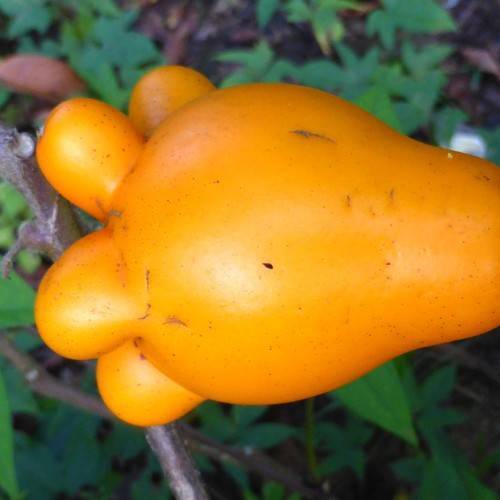
nipplefruit
Solanum mammosum
Cycle:
Herbaceous Perennial
Watering:
Average
Hardiness Zone:
11 - 12
Flowers:
Flowers
Sun:
Full sun
Fruits:
Fruits Ready In
Leaf:
Yes
Growth Rate:
Low
Maintenance:
Low
Drought Tolerant:
Yes
Salt Tolerant:
Yes
Care Level:
Medium
watering
Nipplefruit (Solanum mammosum) is a drought-tolerant plant which requires periodic watering. Depending on your climate, the amount of water required will differ. Start by watering the nipplefruit once per week, and check the soil for moisture before each watering. In warm or dry climates, water more frequently to prevent the soil from drying out. As temperatures start to drop in late summer and early fall, reduce the amount of water to every other week until winter. Water deeply after that, allowing water to reach the base of the plant. During winter, limit watering to the root zone only, no more than once a month. Pay extra attention to watering needs if the plant is potted; potted plants tend to dry out much faster than plants in the ground. Always water until it is fully soaked.
sunlight
Nipplefruit (Solanum mammosum) plants require 3-6 hours of direct sunlight per day. The amount of sunlight a nipplefruit plant needs may vary depending on the season, the latitude, and the local climate. For example, in spring and summer months, plants may need up to 6 hours of direct sunlight. In autumn and winter, up to 4 hours may be sufficient. The best time for the nipplefruit plants to receive sunlight is during the morning and early afternoon, when the sun is strongest. This allows the plants to receive the full energy and intensity of the sunlight and prevent sunburns.
pruning
Nipplefruit (Solanum mammosum) plants should be pruned once or twice per year, depending on their size and growth rate. Mid-spring is the optimal time to prune the stems of nipplefruit, as this is when the new growth is starting to occur. Pruning should be done just above a leaf node or side shoot, which will stimulate new growth and ensure that the plant stays healthy and full. If your plant is too large to fit in the space available, you may need to prune more often throughout the season. In addition, late-summer pruning can be used to remove dead or damaged branches. Be sure to use clean pruning tools when pruning nipplefruit plants to reduce the risk of disease.
